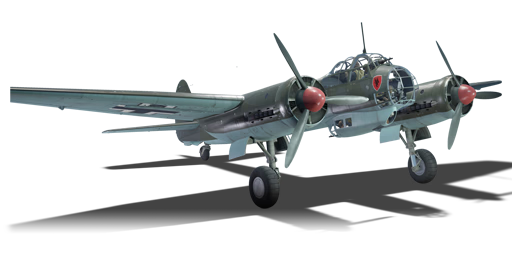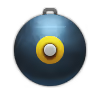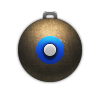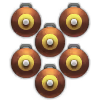

Aviation
Ju 88 A-1
II
Rank
AB
2.7
RB
2.0
SB
2.7
Battle rating
Germany
Research country
Bomber
Main role
9,200

Research
16,000

Purchase
General information
Flight performance
Max speed
at 5,600 m
455415482430 km/h
Rate of Climb
6.83.8113.8 m/s
Turn time
3032.928.531.6 s
Max altitude
9,800 m
Takeoff Run
530 m
Landing
flaps
flaps
Take-off
flaps
flaps
Combat
flaps
flaps
Air
brake
brake
General characteristics
Crew
4 persons
Engine
Length
14.4 m
Wingspan
18.3 m
Wing Loading
161 kg/m²
Weight:
Base weight
7.227.447.057.41 t
Fuel in main tanks
1.22 t (3h 1m)
Limits:
Max Speed Limit (IAS)
675 km/h
Mach Number Limit
0.68 M
G limit
≈ -10/10 G
Flap Speed Limit (IAS)
L / T / C
280 / 429 / 458 km/h
Gear Speed Limit (IAS)
310 km/h
Offensive armament
7.92 mm MG 15 machine gun
Ammunition
375 rounds
Fire rate
1,000 shots/min
One-second Burst Mass
0.17 kg
| Belt | Belt filling | Armor penetration (mm) at a distance: | |||||
|---|---|---|---|---|---|---|---|
| 10 m | 100 m | 500 m | 1000 m | 1500 m | 2000 m | ||
| AP-T/AP-I/AI | 9 | 8 | 6 | 3 | 0 | 0 | |
| AP-T/AP/AI/AP-I | 13 | 12 | 7 | 3 | 2 | 0 | |
| AP-T | 9 | 8 | 6 | 3 | 0 | 0 | |
| AI/AP/AP/AP/AI | 13 | 12 | 7 | 3 | 2 | 0 | |
Defensive armament
2 × Turret — 7.92 mm MG 15 machine gun
Ammunition
1,125 rounds
Fire rate
1,000 shots/min
One-second Burst Mass
0.17 kg
| Belt | Belt filling | Armor penetration (mm) at a distance: | |||||
|---|---|---|---|---|---|---|---|
| 10 m | 100 m | 500 m | 1000 m | 1500 m | 2000 m | ||
| AP-T/Ball/Ball/AP-I/AI | 9 | 8 | 6 | 3 | 0 | 0 | |
| AP/AP/AP/AP-T | 13 | 12 | 7 | 3 | 2 | 0 | |
| AP-I/AP-T/AP-I/AP-T | 9 | 8 | 6 | 3 | 0 | 0 | |
Suspended armament
Max weight
2,450 kg
Wing loading
left / right
Maximum
1,025 kg
Max. difference
750 kg
| Name | Weight | Slot | ||||
|---|---|---|---|---|---|---|
| 250 kg |  |  |  |  | ||
| 110 kg |  |  |  |  | ||
| 500 kg |  |  | ||||
| 500 kg |  |  | ||||
| 225 kg |  |  | ||||
| 10 × | 500 kg |  | ||||
| 28 × | 1,400 kg |  | ||||
Economy
Repair cost
Basic → Reference
AB
708 → 893 

RB
1,020 → 1,286 

SB
1,765 → 2,226 

Crew training
4,500 

Experts
16,000 

Aces
180 

Research Aces
190,000 

Reward multiplier
AB / RB / SB
50 / 100 / 180 % 

118 % 

Total cost of modifications
8,420 

9,500 

Talisman cost
640 

Research order:
Flight performance | |
|---|---|
Weaponry | ||
|---|---|---|
Rating by players
You must play more than 3 battles for the last week and more than 10 battles in a vehicle to rate it.
Like:
11
Flight performance:
Not enough ratings
Survivability:
Not enough ratings
Aerial combat:
Not enough ratings
Ground attack:
Not enough ratings
Balance:
Not enough ratings
Tips & Tricks
This space is currently empty
Do you know any interesting vehicle features?
Loading...
No articles about this vehicle yet
Become the first author and get rewards!
Write a guide, tell about interesting historical facts, make a tutorial or simply an interesting post.
No more content